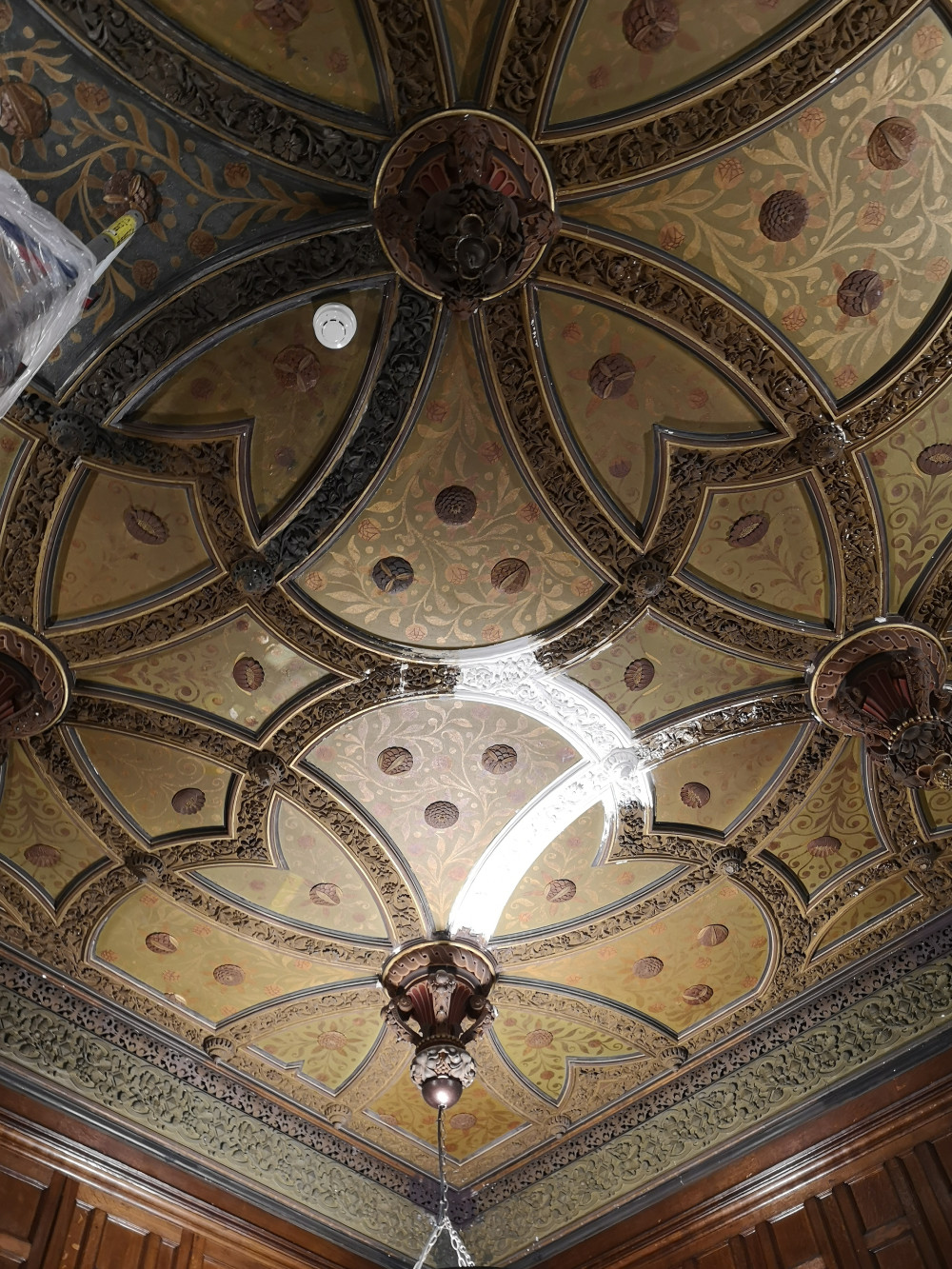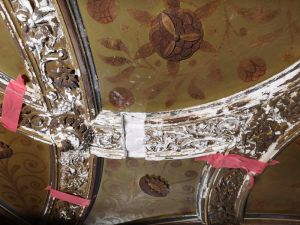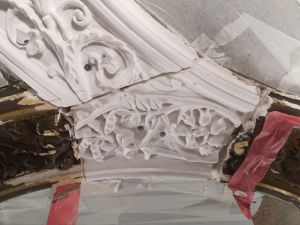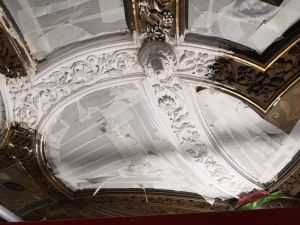Holy Cross

Mold making, casting and installation of complex casts after water damage. Gothic revival ceiling repairs.
As mechanisation took off in the industrial revolution so did casting of ornament inside and
outside of buildings. Tastes for earlier styles of ornament also took off and decoration became
more varied and more widely available to developers.
Classical ornament and rococo had had their time and now victorian tastes wanted to revisit an
earlier time which they regarded as more romantic. Gothic ornament was revived under the
terms gothic revival and neo gothic.
This ceiling repaired is impersonating an Elizabethan ceiling with floral enriched mouldings and
hanging pendants, typical of the Elizabethan era.
The ceiling was in very good condition with only 1 localised repair necessary, the culprit being a
leaky toilet on the floor above. The water travelling through the ceiling had left weak and friable
plaster with a blistered surface.
The area to be repaired was marked out and the corresponding parts of the pattern nearby were
prepared for taking a squeeze from. Squeeze moulds were named as such because they were
once made using clay. A tray of clay would be pushed onto the ornament before being removed.
Casting plaster was then poured into the clay negative waste mould. When the casting plaster
had set and given time to dry, the clay could be peeled away revealing the cast. Silicone rubber
is now used for taking squeeze moulds as it is more durable and can be used for multiple casts
unlike the clay.


